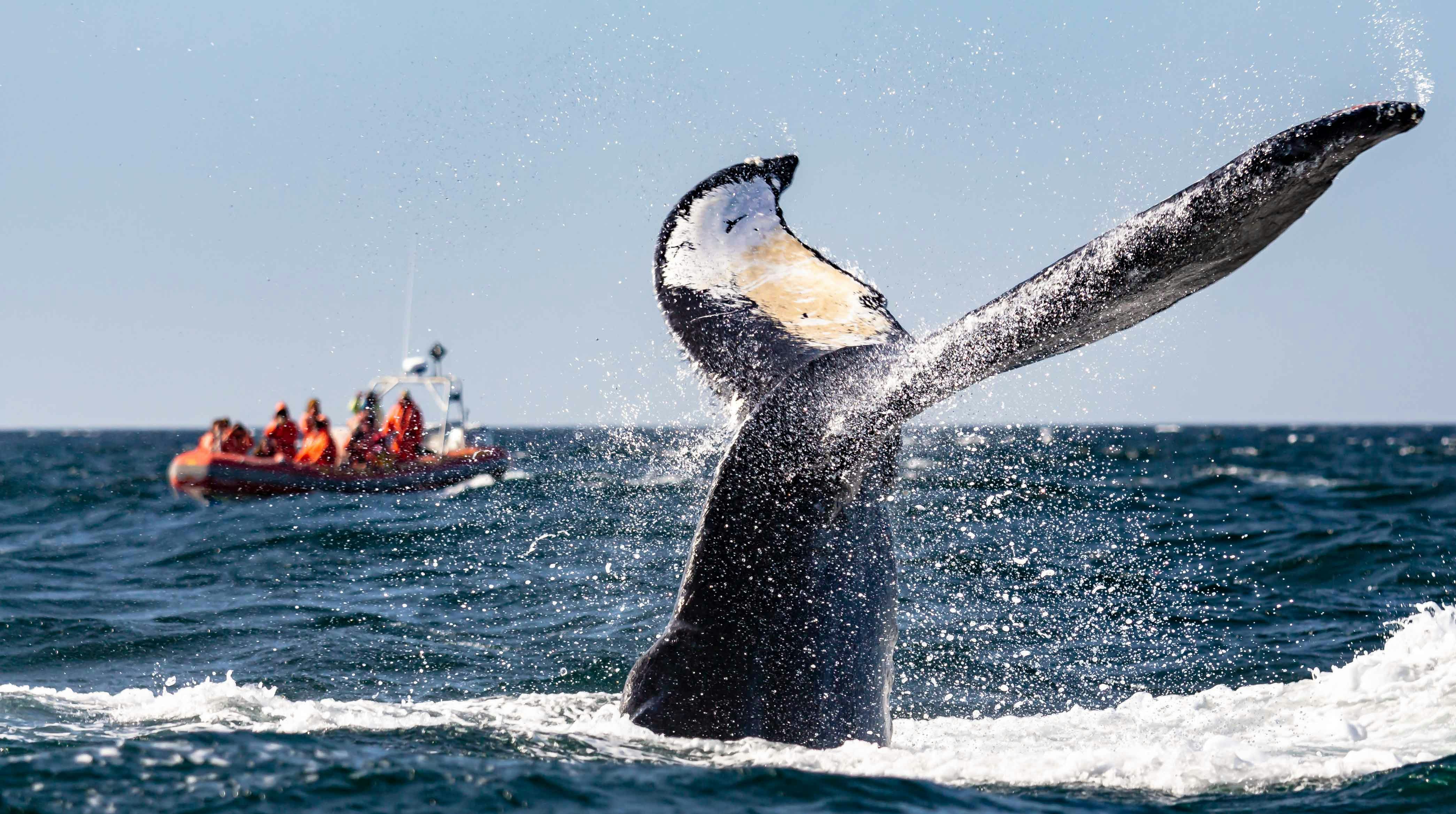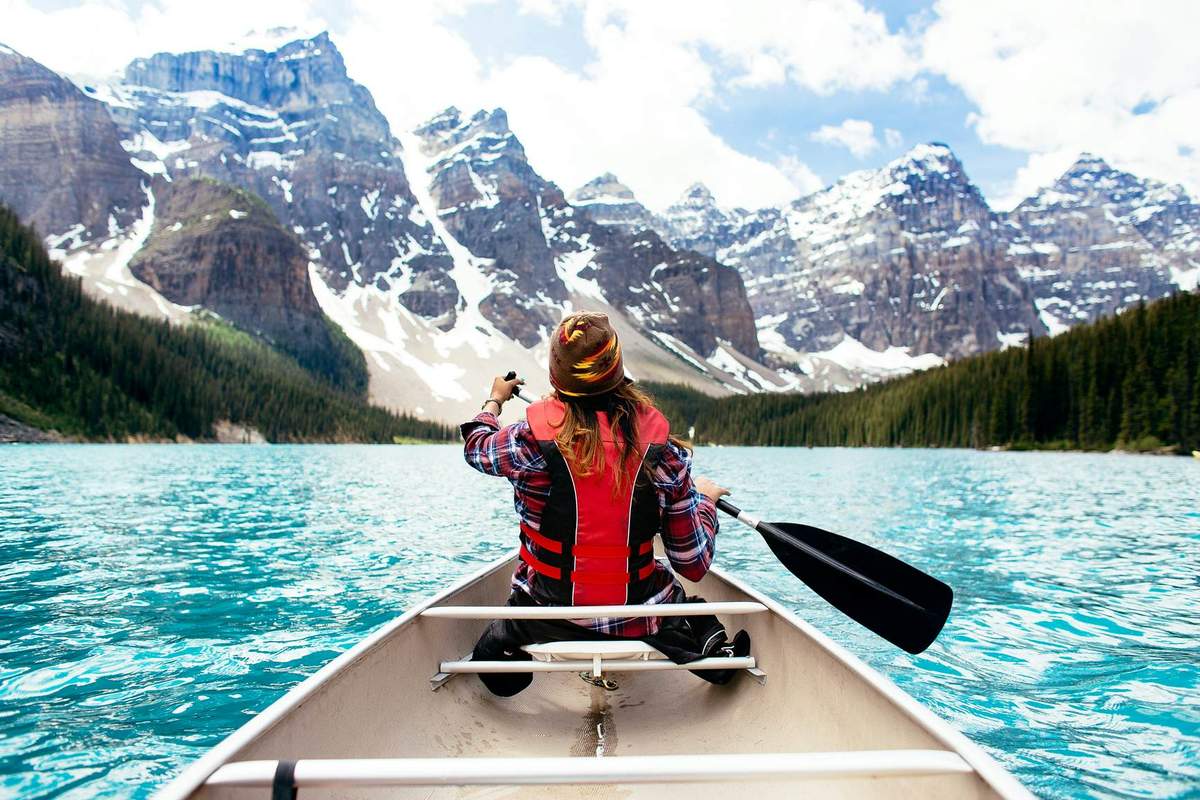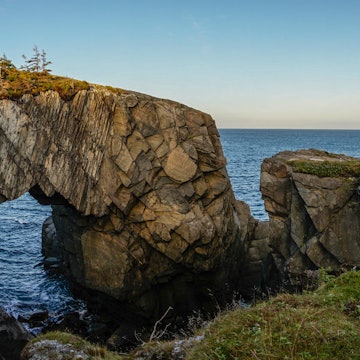
Curious about Nova Scotia? Consider these 11 fabulous things to do in the province

May 24, 2024 • 7 min read

You can’t escape the presence of the North Atlantic in Nova Scotia – so lean in by setting out in a sea kayak © DOPhoto / Shutterstock
“Canada’s Ocean Playground” – the phrase emblazoned on every Nova Scotia license plate – is a call to action to get out and explore this magical province.
Imagine looking a whale in the eye, kayaking around hundreds of wild islands or flying to a giant sandbar populated only by wild horses, seals and birds. You can do it all here.
In Nova Scotia, you can walk ancient petroglyphs with a descendant of the Mi’kmaq people who first etched them. Help fire a cannon. Learn about slavery’s missing chapter. Strike up a conversation with a lobsterman.
Is your curiosity piqued? If so, here are 11 ways to get out and play in Nova Scotia, where natural and human history are equally compelling.

1. Crack open a lobster
More lobster is landed in Nova Scotia than anywhere in the world – and the crustacean is the reason for all those picturesque wharves, fishing boats and lighthouses. It’s always a giant pleasure to crack open a whole, locally caught lobster, steamed to a scarlet red and served with melted butter, a soft bun and a nerdy bib.
Local tip: Dine on lobster at restaurants like the one at Halls Harbour Lobster Pound, or head to a community hall during the Nova Scotia Lobster Crawl festival, held every February. For a more hands-on encounter with lobstering, the “Living Wharves” experience at docks near Yarmouth teaches visitors how to band a lobster’s claws, bait a trap and splice a rope.
Beach-bound? These are our favorites in Nova Scotia
2. Go mud sliding and brown-water rafting
When the world’s highest tides roll up the muddy Shubenacadie River, the collision of waters generates standing waves. Guides like Shubie River Wranglers and River Runners Tidal Bore Rafting take small groups out to raft the Shubie, its waters agitated into a giant chocolate milkshake. When the waves subside, passengers slide down the muddy riverbank like gaggles of gleeful children.
For another unique thing to do, book a seat at Food Fantastique’s 20-person table for a feast on the ocean floor at Burntcoat Head. At over $800 per person, this three-course meal with paired wines is an experience to remember, but it’s not for everyone. Alternatively, anyone can pack a picnic to enjoy nearly any scenic spot along Nova Scotia’s coastline.
Local tip: When mud sliding, choose clothing you don’t mind tossing afterward.

3. Watch the firing of the noon cannon
Instead of jumping out of your skin when Halifax’s noon cannon is fired, as it has daily since 1857, climb Citadel Hill to the fortress ramparts to watch the noisy spectacle up close. The daytime tour led by a kilted soldier is a worthwhile way to learn about 19th-century life. Come sundown, take a lamplight ghost tour that leads inside the very fortress walls.
Detour: Citadel Hill is the centerpiece of the Halifax Defense Complex, five historic sites that once guarded the harbor. Explore the tunnels of Fort Charlotte beneath the grassy cap of Georges Island in the harbor. Stroll the trails around York Redoubt, admire the construction skills required to build the Prince of Wales Martello Tower or explore the Fort McNab ruins.
4. Kayak wild islands and canoe ancient river highways
As you drift over bronze rockweed in crystal-clear waters, the sensation is one of flying as much as floating. Whether it’s paddling with Coastal Adventures on a five-day tour to secluded beaches among the 100 Wild Islands Coastal Wilderness or spotting porpoises around Port Mouton Island with Candlebox Kayaking, sea kayaking is a great way to experience the Atlantic.
Inland, at Kejimkujik National Park, rent a kayak or canoe from Whynot Adventures. Paddle onto the lake where loons call and dive. Groomed portages lead to backcountry campsites and more waterways that served Indigenous Mi’kmaq as highways for millennia. At night, look to the stars in this dark sky preserve where early occupants gazed upwards with the same sense of wonder.
5. Sip world-class sparkling wines
When the massive tides on the Bay of Fundy ebb and flow, they act like bellows, puffing breezes into the Annapolis Valley. These funneled winds temper winter temperatures and aerate vineyards in summer, mimicking conditions in growing regions like Champagne, France. Nova Scotia wineries like Grand Pre, Benjamin Bridge and L’Acadie take advantage of these ideal conditions to create sparkling wines that compete with the world’s best.
Local tip: Forget about driving from winery to winery by taking a bus tour with Grape Escapes or Magic Winery Bus to Annapolis Valley wineries.

6. Gaze into the eye of a whale
With mom watching a short distance away, a curious humpback calf surfaces beside a boat of excited whale watchers – so close that passengers and whales can gaze into each other’s eyes. The experience of exchanging glances with one of the planet’s largest and most intelligent beings can be life-changing.
Petit Passage in Tiverton putts around the Bay of Fundy twice daily in a roomy lobster fishing boat. Pleasant Bay Zodiac Tours zips about off Cape Breton to spot whales, porpoises and seabirds, with passengers protected in brightly colored safety suits.
Local tip: Whales might be the stars of the show, but every ocean outing will please wildlife enthusiasts. Sightings of seals and porpoises are common. Bird Island Boat Tours in Cape Breton gets folks up close to razorbills and puffins.
7. Travel 10 millennia and 300 million years into the past
The Mi’kmaq have lived in Nova Scotia for 10,000 years, and you can tour Canada’s second-largest collection of Indigenous petroglyphs at Kejimkujik National Park; see artifacts like birchbark canoes stitched together with spruce root at the Millbrook Cultural and Heritage Centre, and Wwlk with guides from Eskasoni Cultural Journeys along a 2.4km (1.5-mile) trail to experience Mi’kmaw traditions on Cape Breton Island.
Along the eroding shoreline at Joggins Fossil Cliffs, spotting a fossil is as easy as turning over a stone. With a guide, you can easily find a footprint pressed into Coal Age mud 300 million years ago by an amphibian older than the dinosaurs. Fossils of whole trees are embossed in cliff faces like Greek columns.

8. Hike headlands and mountaintops
If there’s a theme to Nova Scotia’s hiking trails, it’s the big reveal at the end. The two-hour trail winding through Cape Split’s shady forest emerges onto a bluff-top meadow. Massive tides roar past stone pinnacles far below; seagulls soar overhead, eyeing hikers’ picnics. A short detour off the 119km (74-mile) Rum Runners Trail up to Castle Rock reaches another perfect picnic spot, this one overlooking Mahone Bay, dotted with hundreds of islands.
The three-day trek through the wilds of Cape Chignecto skirts cliff edges with views of the mysterious Isle Haute, which seems to float in space when fog creeps around its feet. In Cape Breton, a pleasant hour-long hike on the Skyline Trail ends at a platform with views across time-worn, forested mountain slopes that slip into the sea.
Experience more of Nova Scotia's stunning landscapes on these scenic road trips
9. Dance a jig to traditional tunes
French Acadian and Gaelic Scottish traditions live on in toe-tapping tunes composed by the descendants of European settlers. The Red Shoe Pub in Mabou regularly hosts jams at which local musicians play and step dancers tap out rhythms on wooden floors.
Fiddlers, guitarists and pianists get small halls jumping across Cape Breton during the Celtic Colours International Festival every October. Restaurants like Cuisine Robicheau in Saulnierville host fiddlers and singers to serenade diners.

10. Fly to Sable Island, ruled by wild horses, seals and seabirds
An hour's flight out of Halifax, a silver thread appears on the turquoise ocean through the helicopter window. Over 40km (26 miles) long and barely a kilometer (0.8 miles) wide, this treeless sandbar, Sable Island, is home to 500 wild horses and, at times, over 300,000 seals.
On the ground, guides like those with Kattuk Expeditions tour visitors around this National Park Reserve, picking their way between delicate dunes and ducking angry nesting terns from a colony of thousands. While it’s not for everyone because of the cost (several thousand dollars per person), Sable Island is like a safari in the North Atlantic.
11. Discover slavery’s missing chapter
In 1783, British ships ferried freed and escaped enslaved people from New England to Shelburne, Nova. Those Black Loyalists spent a couple of very difficult years living in shallow pits in nearby Birchtown before convincing the British to provide transport back to Africa, where they founded Freetown, Sierra Leone. This little-known chapter in the history of the trade of enslaved people is told in Birchtown’s bright Black Loyalist Heritage Centre, where sunlight streams through tall windows onto the glass floor.
Detour: Walk Shelburne’s Dock St, where Black Loyalists first landed, and learn more at Museums by the Sea.
Plan your trip to Nova Scotia:
Figure out the best times to visit
These are the places you have to visit
Make sure you know these things before you go















